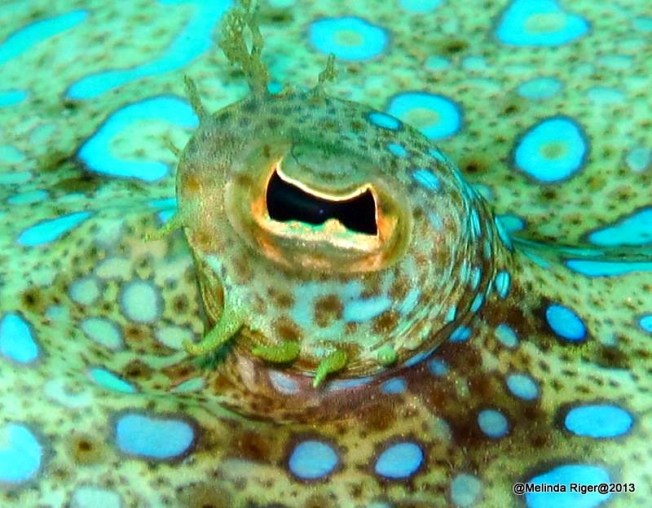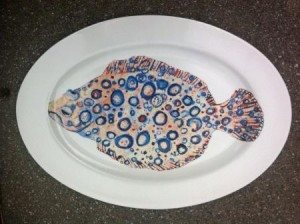PEACOCK FLOUNDER: BAHAMAS REEF FISH (21)
PEACOCK FLOUNDER or PLATE FISH Bothus lunatus
I have briefly featured this fish before in the context of its extraordinary camouflage abilities; and also its interesting ocular arrangements. Time to give it another swim around, I think, with some additional photos that I have collected.

Bothus lunatus is the Atlantic / Caribbean version of a species also found in the Pacific and Indian oceans. Adults may grow up to 18 inches long. The species is a ‘lefteye’ flounder, with both eyes on its left (top) side & its right side underneath. However a baby flounder looks & swims like normal fish, with bilateral eyes. As it grows, the right eye gradually ‘moves’ round to the topside, and it becomes a flatfish.

A flounder’s eyes can move independently of each other. One may look forwards, the other backwards
‘NOW YOU SEE IT…’ CAMO-FISH
The Peacock Flounder has extraordinary colour-changing powers, and can rapidly vary its background colour to make it closely resemble that of its surroundings. This enables it camouflage itself as it lies on the seabed. It can change coloration completely in between two to eight seconds.
Four frames of the same fish taken a few minutes apart showing the ability of flounders to change colors to match the surroundings (Wiki)
Check out these imitative patterns in Bahamas waters…

There are two advantages to the ability to camouflage (‘cryptic coloration‘). One is obviously to avoid detection by predators. The other is to enable the flounder to ambush its meals. They feed primarily on small fishes, crabs and shrimps, lying concealed on the seabed and grabbing any unwary prey that ventures too close. They will even partially bury themselves in the sand, leaving just their eye-stalks keeping watch…
HOW CAN THEY POSSIBLY CHANGE COLOUR SO QUICKLY?
Scientists are still puzzling this out. In a conch shell, it seems the flounder can coordinate its amazing all-round vision with its hormones, instantly releasing certain pigments to its skin cells and suppressing other pigments to make the colour match. Not convinced? Then watch this short video and prepare to be impressed.
Fred Riger of Grand Bahama Scuba, who kindly keeps a benign eye on my reef fish posts (he’s the expert), adds a third excellent reason for coloration changes: sex… “the male peacock flounder can, and does greatly intensify his colors, presumably to declare territory and attract females to his person. When doing this the males will also signal with the left pectoral fin, sticking it straight up and waving it around.” Maybe that is what is going on in the photo below – intensified, non-camouflage colours, and a raised fin…
Peacock Flounder on a plate – Kim Rody Art
Credits: Melinda Riger of Grand Bahama Scuba for almost all photos; wiki for 2 illustrative images


At Freeport high school we set up a marine aquarium as part of the school fayre. The peacock flounder was a showpiece in many ways. It was especially interesting when we put it on the blue and orange gravel (you remember the stuff – mainly blue with orange bits). The flounder immediately went into colour change mode and tried every colour combination in the book to try and matcht the background. It was an amazing display of colour change. Octopusses or is it Octopii? also have fantastic colour change abilities but they usually use it as a warning signial.
LikeLike
Hi Nick, long time no hear! That’s a lovely story of flounder-a-flounder. Apparently they are able to replicate, approx, a chess board! For the authoritative ruling on the plural of octopus, look no further than https://rollingharbour.com/2013/01/08/the-plural-of-octopus-related-cephalopod-mysteries/ Merry Xmas to you. RH
LikeLike
Octopuses sometimes imitate peacock flounders:
LikeLike
Thanks for the comment – I’d read that interesting fact too, very helpful to have the link. RH
LikeLiked by 1 person
🙂
LikeLike